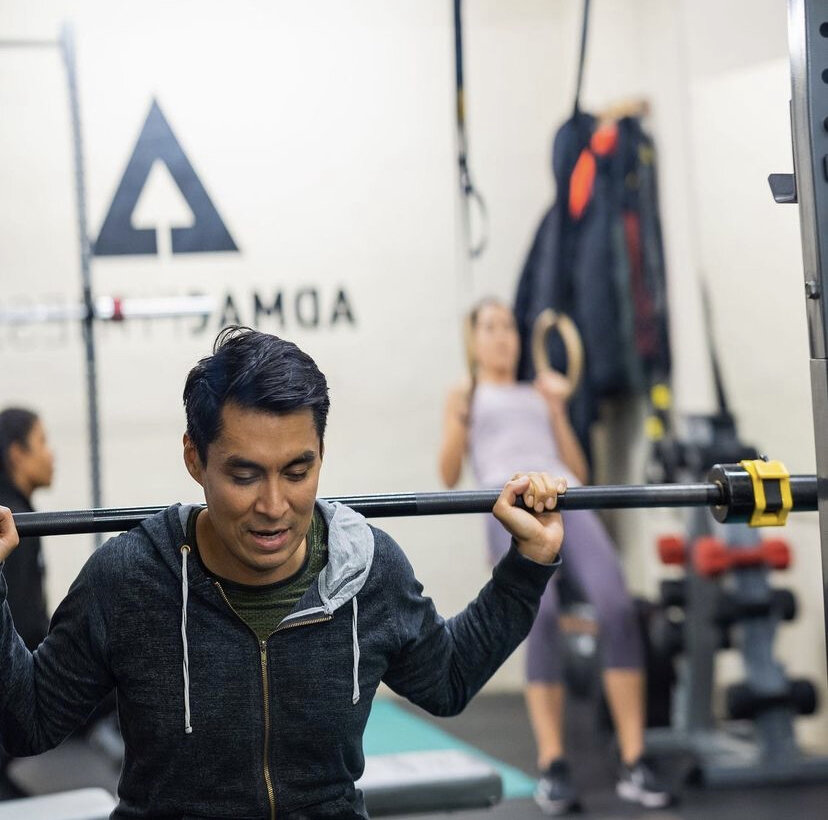If you’re looking for a personal trainer in east London, let us tell you why AdMac Fitness is the perfect place to train. Having built our reputation as east London’s best private personal training studio over the last few years, we can share with you a few reasons why we’re the go-to venue for anyone looking to improve their health and fitness…
AdMac Fitness has amazing personal trainers
What makes a great personal trainer?
In our opinion it’s not just an in-depth knowledge of fitness and exercise programming. It isn’t about nutrition either. They’re the ‘hard skills’ that anyone can learn. Of course they’re fundamental to being a great trainer, but to truly help people get the best from themselves you have to be able to work with clients.
We don’t do the screaming and shouting - if you want that, join the army!
Instead the AdMac Fitness personal trainers work with clients, creating a team that helps you on your way to amazing results. We combine expert fitness and nutrition guidance with a supportive, hard working culture that allows people with different goals to thrive under one roof.
In a world where personal trainers are ten a penny, you have to be good to be successful. That’s why we’re still here, long after many other personal trainers have upped sticks and left the industry. We get results!
Private, supportive environment
The AdMac Fitness team operate out of a private personal training studio in Bow, E3. There’s a lot of reasons why this works so well for our clients…
It’s a private gym, so you never have to wait for equipment
You can exercise without fearing judgement - it’s an amazingly supportive environment
Other users become friends. We’re all trying to achieve the same goals!
There’s never any comprise on kit - our personal trainers design effective workouts because they know our equipment properly!
It’s a clean, well-run space
Your surroundings are key to your success. If you feel as though you are exercising in an environment that supports you, relaxes you and inspires you, you’re going to go the extra mile. You’ll work harder, you’ll enjoy it more and you’ll write your own success story.
There’s a reason why personal training is so effective…
We operate a people-first culture
In the modern world we’re rapidly losing connection. Our friendships are managed over social media. Our dating is handled by apps. Our shopping is done online…
AdMac Fitness is the antidote. We put people and interaction first. You train with us, in-person. You interact, we chat, we support each other. We want to put the ‘personal’ into personal training. That means you’ll follow your own distinct programme. You workouts are yours - not something we downloaded off the internet.
Our personal trainers don’t just update your workouts and count your reps, they share your journey and they take a genuine interest in what you’re doing and how you’re doing it.
Our personal training clients join for the results, but they stay for the culture. They become part of the journey of AdMac Fitness, and our success stories are an amazing advert for what we do. Whether it’s helping someone to shed 50lbs, or help a person build muscle and confidence, happy clients are loyal clients and that’s how we’ve done so well.
The AdMac Fitness personal trainers achieve amazing results…
Always be wary of a personal trainer who doesn't have evidence of the results they helped their clients achieve. Unless you can point to your success, how can you be expected to be trusted to deliver?
The social proof of what we do at AdMac Fitness is abundant… we have so many success stories that validate our approach to training. The sheer range of success, with people from a wide variety of background and with a whole range of health and fitness goals shows the versatility and expertise of our personal trainers.
We don’t hand pick our easy wins, we help anyone who is willing to come in with enthusiasm, a smile and a commitment to what we ask them to do. We don’t pretend that change is easy, but we do promise to support you the whole way!
Are you interested in working with AdMac Fitness? Read on…
The AdMac Fitness personal training studio is in Bow, E3. We have personal trainers with a range of specialities, so we can offer the ideal personal trainer to help you achieve your goals. For more information on who we are, what we do and how we can help you achieve your health and fitness goals, contact us on… 07921465108 or email us at admacfitness@gmail.com. We look forward to hearing from you!










































